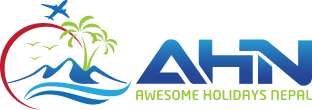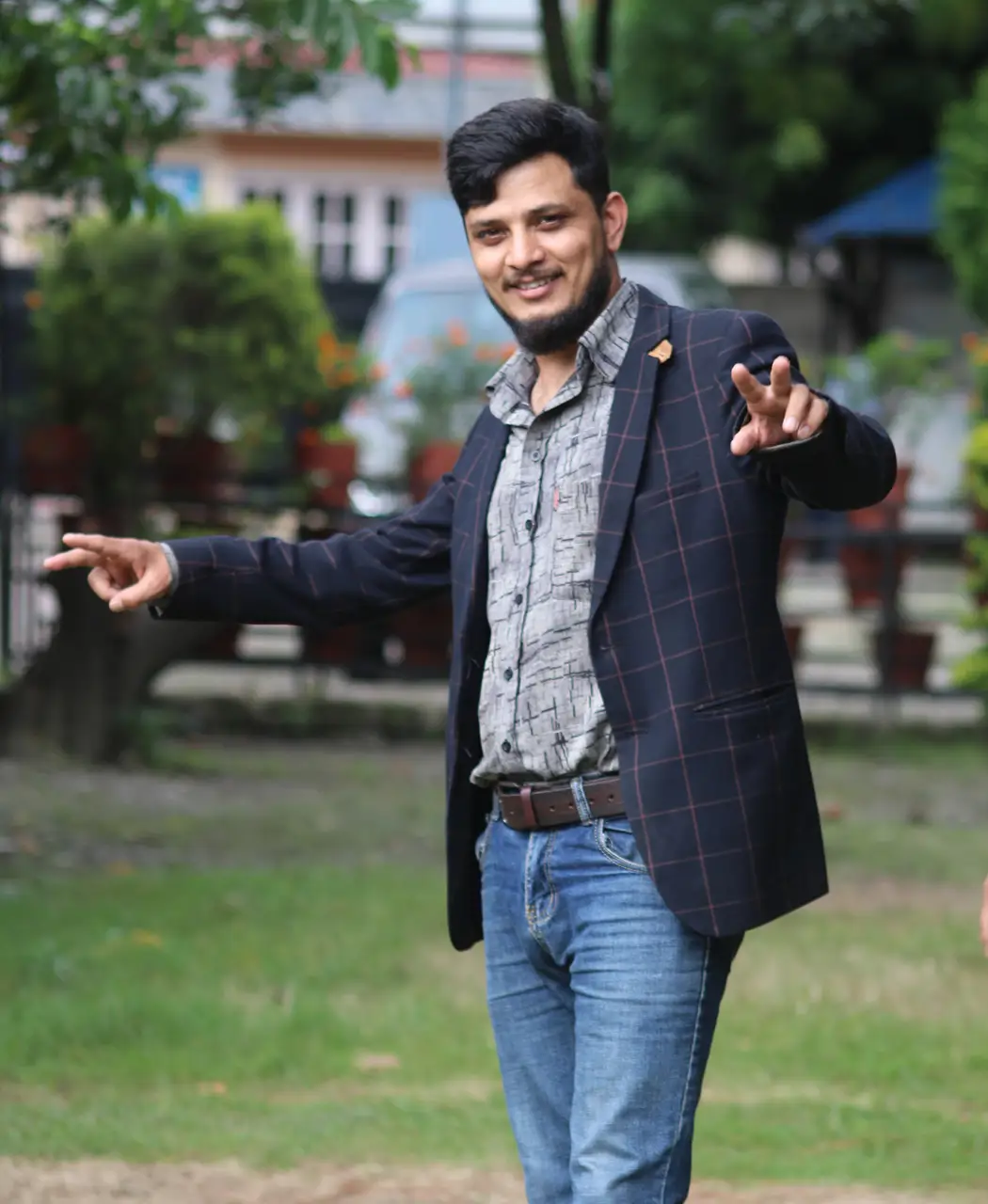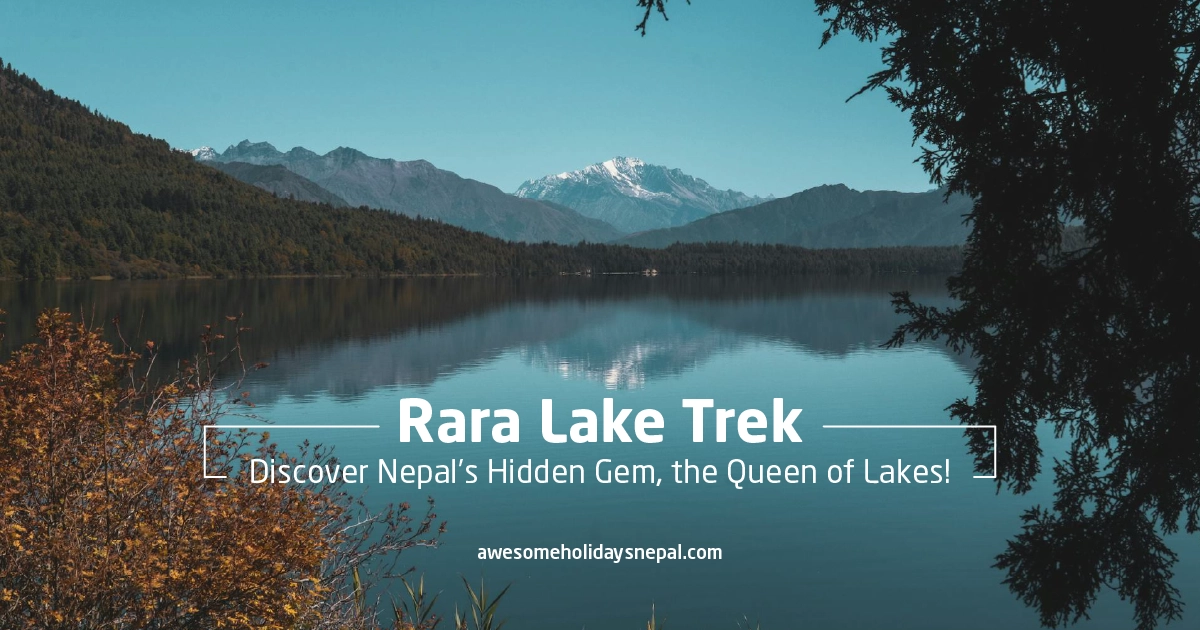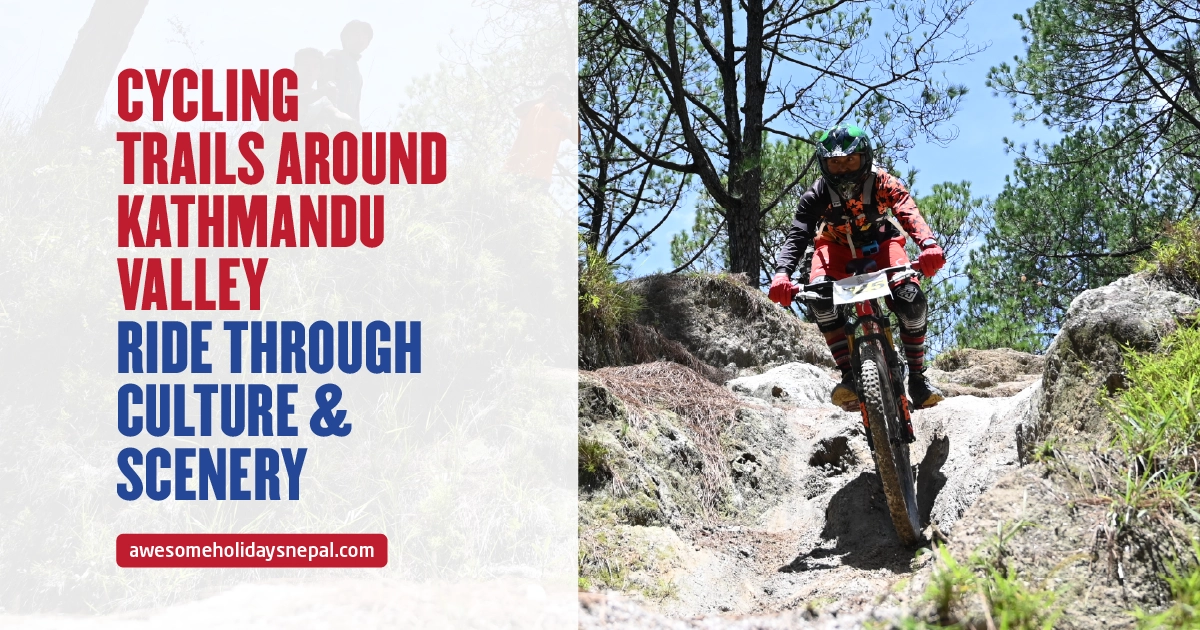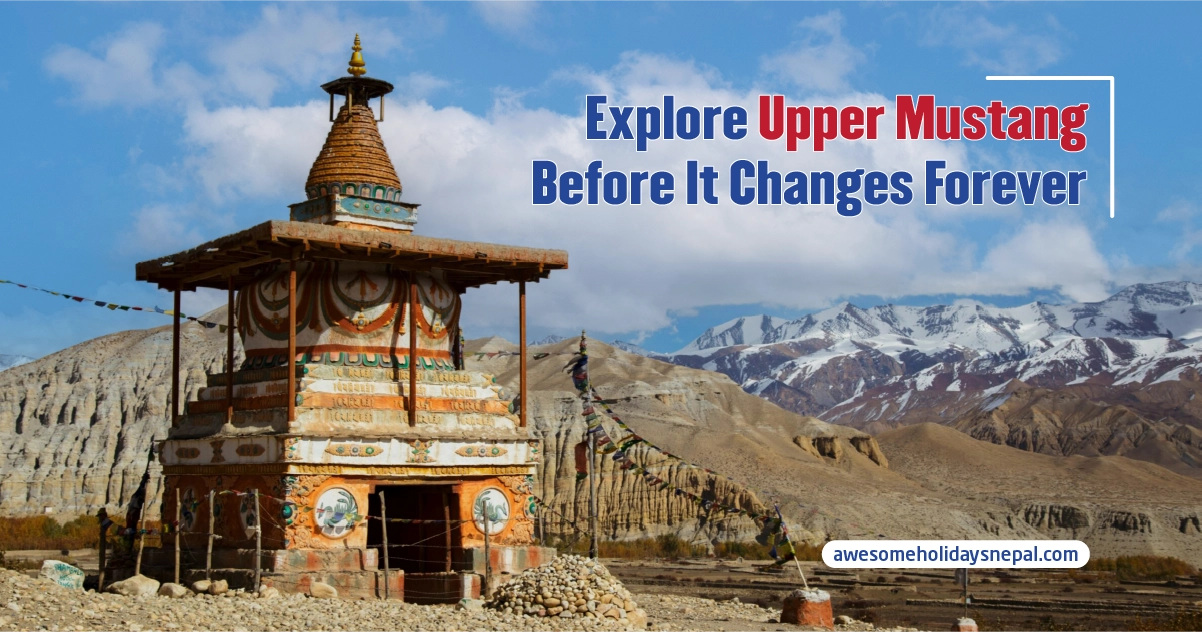Breaking Down the Cost of Trekking in Nepal
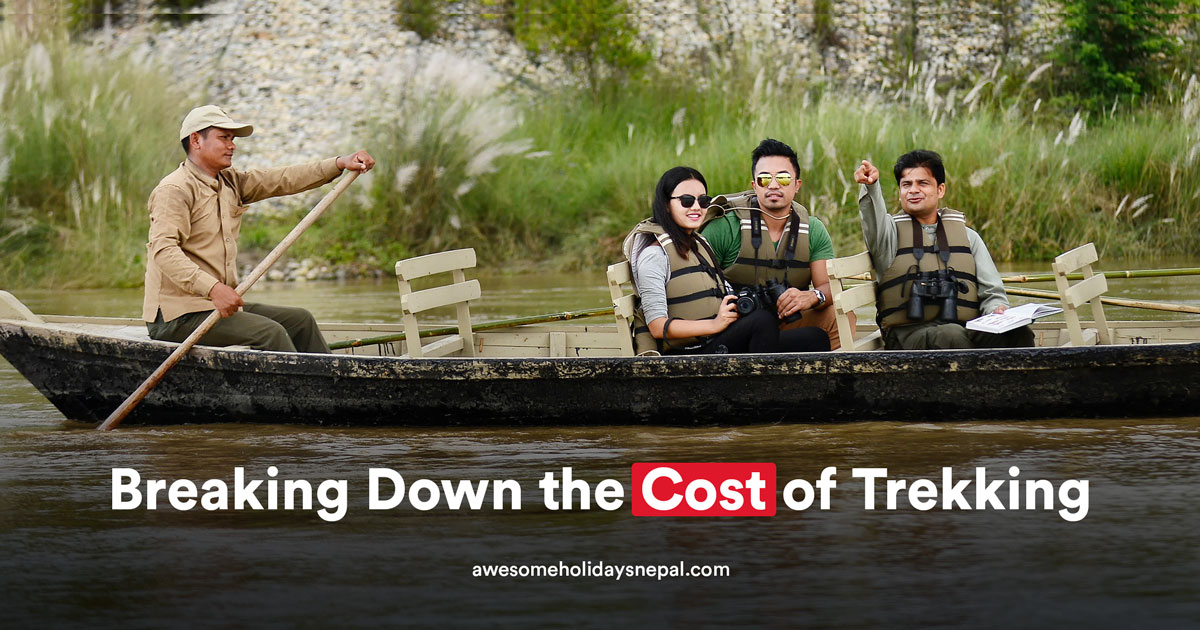
Trekking in Nepal is indeed an unforgettable adventure. It offers everything from breathtaking landscapes to rich cultural experiences to the thrill of conquering challenging trails. However, to fully enjoy this experience, planning well while breaking down the cost of trekking would be best.
Planning your budget prevents unusual surprises and ensures a smoother and happier trek. The Condé Nast Traveler has listed Nepal as one of the 21 Cheap Places to Travel in 2024. It isn’t very easy to determine the exact cost of trekking, but it can take approximately 1,000 USD to 2,500 USD for 7 to 14 days. This may go higher, up to 6,000 USD, depending on the type of service you choose.
Many factors must be considered when planning a vacation. From finding cheaper flight tickets to safe and quality accommodation to local transport, the cost will differ depending on the location, season, number of Pax, and personal preferences.
Let’s discuss how one can efficiently break down the trekking cost in Nepal.
New Rule Set by NTB
The Nepal Tourism Board has prohibited all tourists from traveling to National parks since March 2023. They must trek with a licensed trekking guide. Here’s a comprehensive breakdown of the expenses you should consider when trekking in Nepal.
Services included in a trekking package by a trekking agency
Trekking companies generally include the following services in the package:
- Accommodations in the city
- Transportation from and to the airport.
- Teahouse accommodation and three meals (breakfast, lunch, and dinner) during the trek
- Trekking Guides and Porters
- Trekking permits
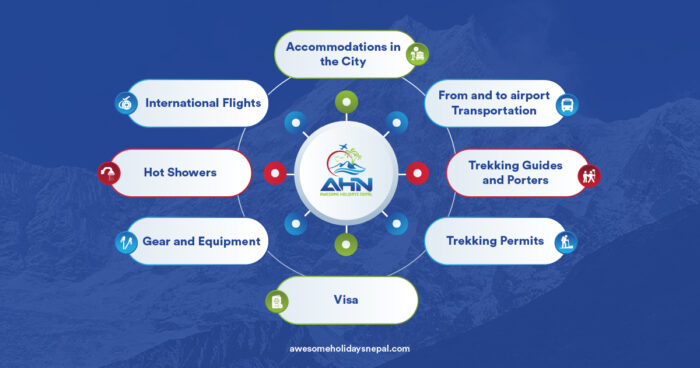
Services excluded from a trekking package by a trekking agency in Nepal
- Visa
- Any food and beverage not included in the three-time meal.
- Gear and equipment
- Hot showers
- International flights
- Tips for the guide and porters.
- Travel Insurance
- Wi-Fi and electricity to charge your phone and gadgets
- Any contingency charge arising from bad weather or natural causes.
Breaking Down the Cost of Trekking: Visa and Permit Costs
Before stepping onto Nepal’s trails, you’ll need a visa and proper permits to travel to certain areas in Nepal. The Immigration Department of Nepal issues visas to foreigners traveling to Nepal as an entry visa (On-Arrival Visa) at the port of entry at TIA and other customs ports of Nepal. The tourist visa can be extended to not exceed 150 days of stay in a single visa year (Jan-Dec).
The visa fees are listed as:
- For 15 Days – USD 30
- For 30 Days – USD 50
- For 90 Days – USD 125
The visa can be extended for 3 USD per Day for a minimum of 15 days. An additional 5 US$ is charged daily as a delay or late fine. You get an extra 25 USD for a multiple-entry visa facility.
In addition to a visa, you need specific permits to trek in the serene land of Nepal. Not all the places in Nepal need a permit to travel, but there are certain areas where you need to get a permit. Here is a breakdown of the licenses you may need for a joyful trek.
TIMS (Trekkers’ Information Management System)
TIMS is required for most treks, and the cost is NPR 1,000 for SAARC citizens and solo trekkers, while for others, it is NPR 2,000.
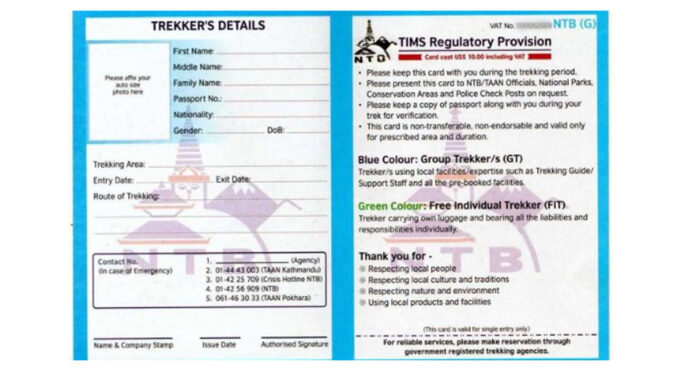
Here is the list of the trekking regions where TIMS is compulsory before trekking:
Conservation Area Permits
All kinds of travelers, including FIT (Free Individual Trekker) or in-group travelers, are allowed to trek in Nepal. However, the government of Nepal highly regulates certain regions in Nepal where FIT is prohibited.
Only Authorized agencies can apply for trekking permits for at least two trekkers. This must be done from the official site of the Department of Immigration.
Specific regions like the Annapurna and Manaslu areas require permits costing NPR 3,000. For places like Upper Mustang or Dolpo, the Restricted Area Permits range from USD 50 to USD 500, depending on the trek duration and location.
| SN | Place | Normal Charge (First Week/Period) | Additional Charge (Per Day/Week) |
| 1 | Upper Mustang | USD 500 (First 10 days) | USD 50 per additional day |
| 2 | Humla Rural Municipality | USD 50 (First 7 days) | USD 10 per additional day |
| 3 | Lower Dolpo | USD 20 (First week) | USD 5 per additional day |
| 4 | Manaslu Conservation Area | USD 100 (Sept-Nov, first week) | USD 15 per day (Sept-Nov); USD 10 per day (Dec-Aug) |
| 5 | Upper Dolpo | USD 500 (First 10 days) | USD 50 per additional day |
| 6 | Solukhumbu Rural Municipality | USD 20 (First 4 weeks) | USD 25 per additional week |
| 7 | Manang Nar Phu Region | USD 100 (Sept-Nov, first week) | USD 15 per day (Sept-Nov); USD 10 per day (Dec-Aug) |
| 8 | Taplejung Rural Municipality | USD 20 per week (First 4 weeks) | USD 25 per additional week |
| 9 | Rasuwa Gosaikunda | USD 20 per week | N/A |
| 10 | Gorkha Tsum Valley | USD 40 (Sept-Nov, first week) | USD 7 per day (Sept-Nov); USD 30 (Dec-Aug, first week) + USD 7 per day (Dec-Aug) |
| 11 | Makalu Region | USD 10 per week (First 4 weeks) | USD 20 per additional week |
| 12 | Dolakha Rural Municipality | USD 20 per week | N/A |
| 13 | Bajhang (Saipal Rural Mun.) | USD 90 (First 7 days) | USD 15 per additional day |
| 14 | Darchula | USD 90 (First 7 days) | USD 15 per additional day |
| 15 | Mugu Rural Municipality | USD 100 (First 7 days) | USD 15 per additional day |
Seasonal Considerations
The peak seasons are a bit crowded in almost all the trekking routes. Autumn (Sep-Nov) and Spring (Mar-May) are a bit busy seasons, but they are also good for the weather. To outrun any kind of hurdle, bookings are preferred. Ensure to arrange your permits from Kathmandu or Pokhara before beginning your trek.
Breaking Down the Cost of Trekking: Transportation Costs
The cost might vary depending on the route you choose. You can travel by plane, bus, or private jeep in Nepal.
Local Bus
This is the cheapest means of transportation to Nepal. In any place close to Kathmandu or Pokhara, you can grab the local bus and travel with the local public, sharing their stories and learning about their way of life and communication.
Nepalis love to talk to foreigners, though some do not understand English or any other language. Be aware of the situation of the road you are traveling on. Especially during the rainy season, some of the roads in remote areas might become troublesome to travel. Make sure to check the status of the road before traveling.
Tourist Bus
Traveling by a tourist bus with a green number plate is mainly preferred and recommended for tourists. This vehicle is cozier and more convenient.
Jeep
If you do not want to travel on a sharing basis, jeeps like Scorpio and Bolero are the best choice. The price is slightly higher than the local bus, as you can enjoy your privacy and time.
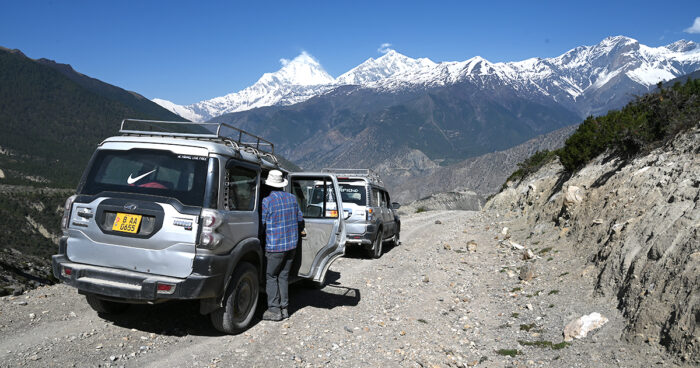
Domestic Flights
You can enjoy scenic flights from Kathmandu to major cities in Nepal, such as Pokhara, Chitwan, Nepalgunj, Bhairahawa, and so on. Various service providers, such as Buddha Air, Yeti Airlines, Simrik Airlines, and Shree Airlines, are always there to assist you with the cheapest flight fares.
Helicopter Charter
If you are on a time-bound trip with a loaded pocket, you can charter a helicopter to make a luxury trip to Base Camps, observe the beauty of ice giants, and return. Some of the helicopter companies of Nepal are listed below:
- Air Dynasty Heli Service
- Altitude Air
- Annapurna Helicopter
- Fishtail Air
- Heli Everest
- Kailash Heli Service
- Manang Air
- Mountain Helicopter
- Mustang Helicopter
- Prabhu Helicopter
- Shree Airlines
- Simrik Air
Travel Insurance
Travel insurance is a contract between you and your agent to protect you as a traveler from unexpected events and financial losses that may occur during your trips. It acts as a safety net, providing compensation or assistance due to problems arising from uninvited situations that may occur due to challenging terrains, high altitudes, and unpredictable weather. The insurance gives you protection and peace of mind in case of emergencies.
Why is Travel Insurance Important?
Cost: Policies covering trekking and helicopter evacuations range from USD 100-150 for a standard trek.
Coverage: Ensure your policy includes medical emergencies, altitude sickness, and evacuation up to 6,000 meters.
Treks can be disrupted by unforeseen events like sickness, political vandalism, or natural disasters (e.g., landslides or avalanches). Travel insurance compensates for non-refundable expenses like trek permits, guide fees, and accommodations. It also covers loss, theft, or damage to items such as expensive gear, cameras, trekking poles, and boots during the trip.
Flights to remote areas like Lukla are often delayed or canceled due to bad weather. Travel insurance compensates for additional accommodation and transportation expenses.
Emergency Medical Coverage in trekking regions like Everest Base Camp or Annapurna often involves high altitudes, where altitude sickness (Acute Mountain Sickness) is a common threat.
Foreigners may face expensive medical bills if they undergo treatment at local clinics or hospitals. In such a scenario, immediate evacuation is impossible due to terrain and the absence of vehicles. Then, it would help if you had an emergency evacuation by helicopter to get medical attention quickly.
Accommodation Costs
Accommodation includes hotels in cities like Kathmandu and Pokhara and tea houses on trekking routes like Annapurna Base Camp, Everest Base Camp, and Langtang Valley Trek. The cost of accommodation varies depending on the trek and altitude.
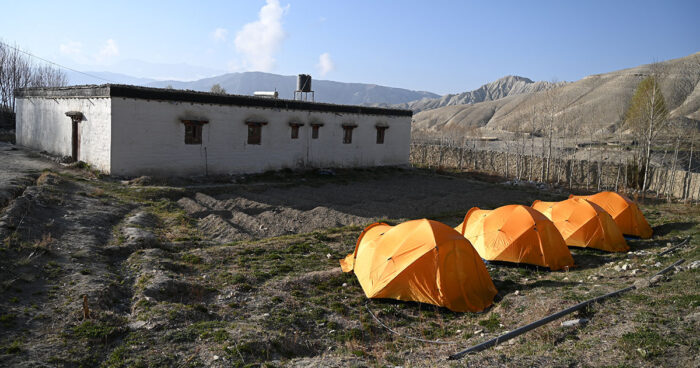
- Tea Houses and Lodges: The price of tea houses and lodges starts at NPR 1,000 per night at lower altitudes but can go up to NPR 2,000-2,500 at higher elevations.
- Luxury Options: Premium lodges on popular routes like Everest offer upscale amenities at USD 100 or more per night.
- Camping: Not all trekking routes have tea houses. Such routes require camping, and the additional costs of tents, sleeping bags, guides, and porters add significantly to your budget.
- Additional charges like hot showers and WI-FI take an additional charge.
Food and Beverage Expenses
In cities, you get all the varieties of food at a reasonable price. However, the cost of food and drinks rises as you ascend. Expect to pay NPR 500-700 per meal at lower elevations and NPR 800-1,200 at higher altitudes.
Bottled mineral water costs NPR 50-200, depending on the altitude. You can carry your own water filters or purification tablets to reduce expenses. Tea, coffee, snacks, and bakery can add to your choices. Stick to simple, local dishes like dal bhat to minimize the costs while enjoying nutritious meals.
Guide and Porter Fees
Always hire a Licensed guide if you are traveling to a new place. For your convenience, you can hire a porter to assist you with the luggage and supplies.
- Guides charge 35 USD to 50 USD per day, depending on experience.
- Porter Rates: 25 USD to 35 USD per day.
- Tipping: Allocate 10-15% of the total trip cost as tips for their invaluable assistance.
Gear and Equipment Costs
Do not compromise on investing in buying or renting quality gear. You should purchase trekking boots, poles, jackets, trousers, crampons, rain ponchos, and backpacks.
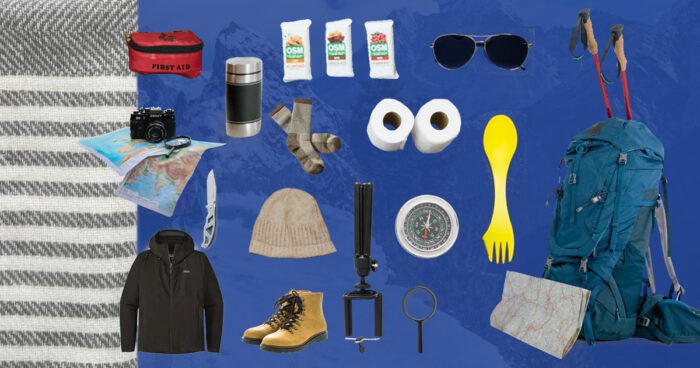
You can always buy them in the thrift stores in Thamel and Pokhara. They can cost USD 200-500. More expensive items, such as sleeping bags or down jackets, are available for 1 USD to 5 USD per day in Kathmandu or Pokhara.
Always make a checklist before traveling. For more insights, check our blog on “How to Pack for Trekking in Nepal.”
Miscellaneous Costs
You might require a SIM card in Nepal to communicate effectively. You get a SIM card from either Nepal Telecom or Ncell for NPR 100 as soon as you enter the airport. You will be provided a walkie-talkie with Satellite phones for remote or high-altitude regions. But if you are a FIT, get a satellite phone or GPS. Most of the tea houses are equipped with Wi-Fi routers.
Just pay a few bucks and enjoy the WIFI on your phone. Due to the terrain and land structure, charging your phone may take an extra NPR 200-500 per hour, as direct power lines are not available in the high altitudes of the mountains.
Budget-Friendly Tips for Trekking in Nepal
Do you want to enjoy the adventure without overspending? Here are budget-friendly tips for trekking in Nepal, which will help you dive into nature and save your budget.
- Trek during the off-season (monsoon or winter) for discounts on accommodations, guide services, and flights.
- Choose a shorter trek, such as Ghorepani, Langtang Valley, Mardi Himal Trek, or ABC trek, that requires fewer days to complete, requires fewer gear, and lowers the cost of Food and Beverages.
- Better travel in groups to share transportation, guide costs, and keep you safe.
- You can rent gear instead of buying to save money.
- Pack only the essential items to cut off the porter charge, but the guide is recommended.
- Eat local foods instead of Western foods, and carry water purification tablets to reduce food and drink expenses.
- Where possible, use public transportation instead of flights. This will also allow you to get involved with the local culture.
- Get your supplies like snacks, medicine, and toiletries in advance from the city instead of remote villages, as the cost will hike as the altitude rises.
Wrapping Up the Cost of Trekking in Nepal
Trekking in Nepal with a properly planned budget is a life-changing experience. Breaking down the cost of trekking is necessary to enjoy exploring Nepal without any funding issues.
From the stunning landscapes to the cultural richness, the adventure is worth every penny spent. Plan, prepare, and pack thoroughly to embark on your trek.
You can experience the beauty of Nepal’s trekking trails without breaking the bank!
FAQs
Expand AllWhy is trekking in Nepal so expensive?
Trekking in Nepal isn’t very expensive if you know how to allocate your budget. Trekking costs include food and accommodation, trekking gear, trekking guides, and transportation.
How much does trekking cost in Nepal?
The trekking cost in Nepal can range anywhere from $400 to $2500. However, the actual cost entirely depends on your chosen region and the services you want while on the trek.
What is the trekking rule in Nepal?
The trekking rules in Nepal became stricter on April 1, 2023, as the Nepal Tourism Board imposed many mandatory rules. All travelers, including solo travelers, must always be accompanied by a licensed guide or a porter.
How much does a trekking guide cost in Nepal?
The cost of a trekking guide depends on the region and the difficulty of the trek. Usually, a guide costs between $20 and $40.
Why is Nepal famous for trekking?
Nepal has outstanding trekking possibilities because of its stunning Himalayas, deep valleys, and rugged terrain. Apart from the landscapes, the natural beauty and cultural experiences while on the trek make Nepal famous for trekking.
What is the most visited trek in Nepal?
Despite being the most difficult to attain, the Everest Base Camp trek is the most visited in Nepal.
How many trekking are there in Nepal?
There are several trekking routes in Nepal with different levels of difficulty. Some of the most famous routes are the Everest Base Camp trek, the Annapurna Base Camp trek, the Manaslu Circuit trek, and the Langtang Valley trek.
What is the easiest trek in Nepal?
The Langtang Valley Trek is the easiest trek in Nepal because it is short and easily accessible from the valley.
Related blog posts
Discover a choice of tourist destinations loved by most of our visitors. Whether you're on a jungle safari to spot rare animals or walking through a world heritage site, these well-planned itineraries cover the major highlights of Nepal.
